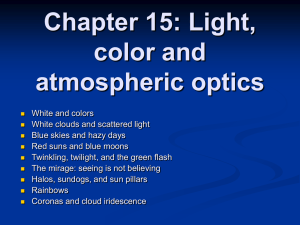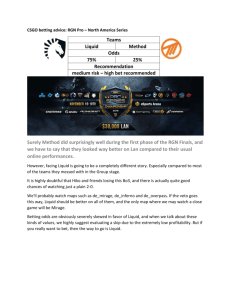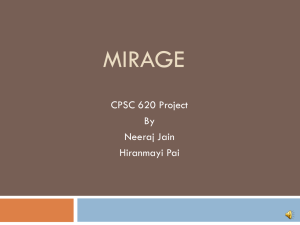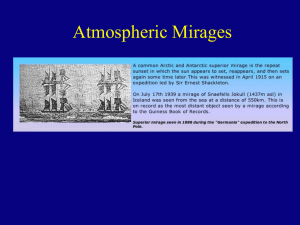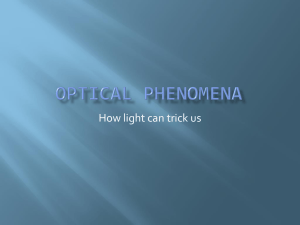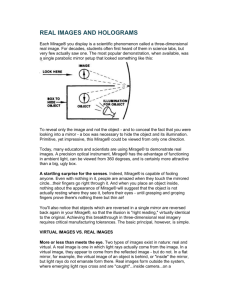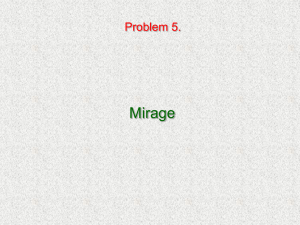Chapter_15
advertisement
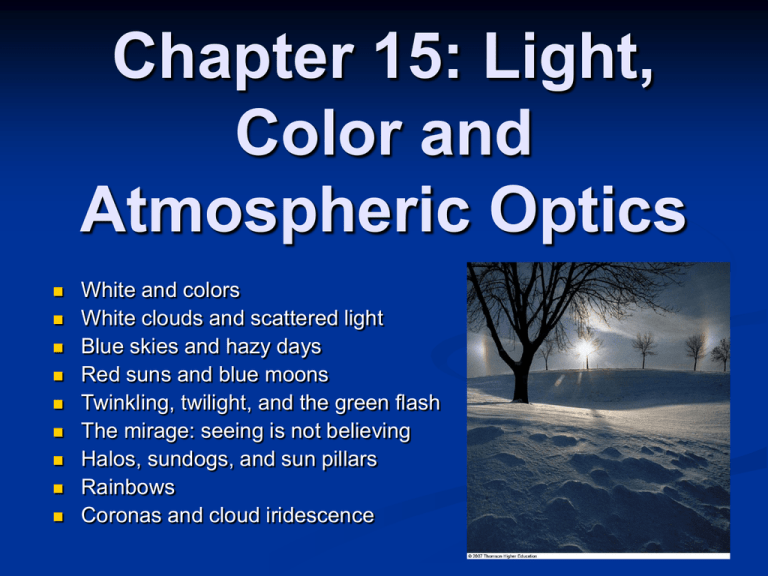
Chapter 15: Light, Color and Atmospheric Optics White and colors White clouds and scattered light Blue skies and hazy days Red suns and blue moons Twinkling, twilight, and the green flash The mirage: seeing is not believing Halos, sundogs, and sun pillars Rainbows Coronas and cloud iridescence White and Colors Review: Nearly half of radiation from sun is visible light (what wavelengths are longest?) Four possible fates of light as it enters atmosphere (absorbed, reflected, scattered, transmitted) So what wavelengths is all white light? Black light? We see using rods and cones White Clouds and Scattered Light Reflection – occurs when sunlight bounces off a surface at same angle Scattering – occurs when sunlight is deflected in all directions Why is the bottom of thunderstorms dark? Blue Skies and Hazy Days Selective scattering – ability of molecules to scatter one wavelength better than others The larger the particle, the more they scatter all wavelengths. Haze is white because of this Crepuscular rays – scattering of sunlight by dust and haze to produce white bands of light Red Suns and Blue Moons Sun can appear red because it travels through more atmosphere near sunset than at midday Blue moon and suns can happen if the particle is the same size as visible light (scattered red more) Volcanoes can cause red suns for many days Fig. 15-8, p. 420 Fig. 15-9, p. 420 The Mirage: Seeing Is Not Believing Refraction – bending of light due to density changes Light that travels from less to more dense loses speed, and vice versa Lights twinkle due to refraction Twilight occurs due to refraction The Mirage: Seeing Is Not Believing Mirage – an image that appears displaced from its true position Caused by light moving through different air densities Inferior mirage – images that appear lower and inverted from original Superior mirage – images that appear higher than original Inferior Mirage Warm surface, decreasing temperatures aloft • The proper conditions for an inferior mirage are commonly found over a hot road surface during summer, or over an unfrozen lake on a very cold day. Stepped Art Fig. 15-16, p. 424 Superior Mirage Cold surface, warmer temperature aloft • The proper conditions for a superior mirage are commonly found over water and over snow-covered surfaces. Stepped Art Fig. 15-17, p. 425 Fata Morgana Complex vertical temperature profile • According to legend, King Arthur’s half-sister, Fata Morgana in Italian, was a fairy enchantress trained by Merlin the Magician. She lived in a crystal palace beneath the water and could build fantastic castles from thin air. Halos Halo – Ring of light encircling sun or moon Ice crystals refract light to create halo Dispersion – breaking up of light into different wavelengths (prism) Sundogs Created by hexagonal ice crystals oriented horizontally Ice crystals act like a prism • Sundogs are commonly seen when cirrostratus clouds are in the sky. Sun Pillars Caused by reflection of light off ice crystals • Sun pillars can be seen shortly after sunrise or shortly before sunset on very cold days. Sun Pillars Rainbows Water droplet phenomenon When sunlight enters rain drop, it refracts and disperses Red refracts less than violet This light is reflected off backside of raindrop at critical angle Each wavelength is reflected at different angle to our eyes (dispersed) It takes many different raindrops to produced a rainbow (each raindrop gives a different wavelength) Must face the falling rain with sun at your back The primary rainbow, the brightest of the rainbows Fig. 15-26, p. 429 Fig. 15-28, p. 430 The Secondary Rainbow Two internal reflections (secondary rainbow) • A tertiary rainbow also exists, but it is too faint to be seen with the human eye. Coronas and Cloud Iridescence Diffraction – bending of light around objects Corona – Bright ring of light around the moon or sun Blue appears on inside of ring, red on outside The Corona Need a cloud that has droplets of similar size New clouds are the best corona producers Cloud Iridescence Iridescence - bright areas produced by diffraction Associated with thin clouds within 20 degrees of sun The Glory Sun must be to your back, cloud in front of you • It is very common to see a glory from the window of an airplane. Make sure you are sitting on the side opposite the sun.
